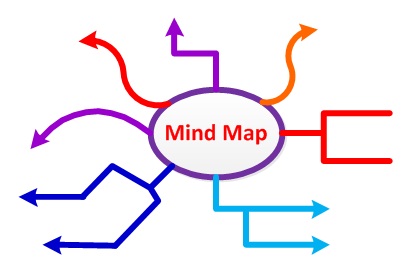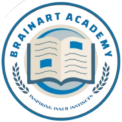Introduction
Effective studying isn’t merely about dedicating countless hours to reading; it’s about employing intelligent strategies to enhance your learning experience. Whether you are a student gearing up for exams or a lifelong learner eager to acquire new knowledge, implementing research-supported study techniques can significantly boost your productivity. In this guide, we will discuss ten impactful study techniques designed to help you better remember information, maintain focus, and increase efficiency.
These techniques are crafted to assist learners of all ages, from high school and university students to professionals seeking to improve their skills. By utilizing these approaches, you can cultivate better focus, enhance retention, and ultimately achieve superior outcomes with less effort.
1. Recognize Your Learning Style
Individuals learn in various ways, and recognizing your learning style can greatly improve your study effectiveness. The primary learning styles encompass:
• Visual Learners – Thrive on diagrams, charts, and visual resources.
• Auditory Learners – Absorb information more effectively through listening, discussions, or audio content.
• Kinetic Learners – Excel through hands-on tasks and experiential learning.
• Reading/Writing Learners – Favor text-based resources, note-taking, and written summaries.
How to Utilize This Technique:
• Visual learners can design mind maps or infographics to grasp intricate subjects.
• Auditory learners might record lectures or use text-to-speech software for playback during commutes.
• Kinetic learners can participate in experiments, utilize flashcards, or engage in role-playing exercises.
• Reading/writing learners should prioritize summarizing ideas in their own language and keeping organized notes.
Understanding your learning style enables you to customize study sessions to align with your inherent strengths, making the learning process more effective and enjoyable.
2. Apply the Pomodoro Technique
The Pomodoro Technique is a time management approach that divides study sessions into brief, concentrated intervals (usually 25 minutes), followed by a 5-minute pause. This method enhances concentration and mitigates fatigue.
Steps to Implement the Pomodoro Technique:
1. Select a specific task to study.
2. Set a timer for 25 minutes.
3. Study with complete focus until the timer goes off.
4. Take a 5-minute break.
5.After finishing four Pomodoro sessions, take a longer break (15-30 minutes).
Why it Works: The Pomodoro Technique boosts concentration, motivation, and time management while minimizing procrastination. It is particularly beneficial for subjects that demand deep focus, such as mathematics and sciences.
Pro Tip: If 25-minute sessions seem too brief, modify the time according to your preferences. Some individuals perform best with 50-minute study intervals followed by 10-minute breaks.
3. Establish a Distraction-Free Study Space
A disorganized or noisy setting can greatly hinder your concentration. Creating an ideal study environment is essential for effective learning.
Suggestions for a Productive Study Space:
• Select a quiet area with minimal interruptions.
• Maintain an orderly study space, free of clutter.
• Utilize noise-canceling headphones or listen to ambient study music.
• Employ website blockers like Cold Turkey or Freedom to avoid social media distractions.
• Only keep the necessary study materials on your desk to minimize clutter.
Pro Tip: If you struggle to find a peaceful environment, consider using productivity applications like Forest or Cold Turkey Blocker to reduce distractions. Furthermore, establishing a specific study area in your home can signal to your mind that it’s time to concentrate.
4. Engage in Active Learning
Active learning means interacting with the material rather than just passively reading or listening.
Active Learning Techniques:
• Summarization – Jot down important points after each study session.
• Teaching Others – Clarify concepts to a friend or an imaginary audience.
• Self-Testing – Frequently quiz yourself on essential topics.
• Hands-On Practice – Engage in practical exercises, case studies, or projects.
Active learning improves retention, understanding, and recall by making study sessions more interactive.
Example: Instead of merely reading a history chapter, summarize the main points, create flashcards, and discuss the subject with a peer.
5. Implement Spaced Repetition
Spaced repetition is a learning method that involves reviewing information at gradually increasing intervals to enhance memory retention.
How to Apply Spaced Repetition:
• Utilize flashcard applications like Anki or Quizlet to space out your study sessions.
• Review challenging concepts more often while spacing out easier topics.
• Slowly increase the time between revision sessions to improve long-term retention.
Why it Works: Spaced repetition aids in storing information in long-term memory, minimizing the need for last-minute studying. It is especially beneficial for language acquisition and medical education.
6. Create Mind Maps
Mind maps are visual aids that assist in organizing and linking ideas.

Steps to Make a Mind Map:
1. Place the main topic in the center of a page.
2. Branch out to connect subtopics.
3. Use keywords, symbols, and colors to emphasize relationships.
4. Continue to refine the map as you learn new information.
Mind mapping enhances creativity, understanding, and recall, making it particularly useful for intricate subjects like biology, philosophy, and business studies.
7. Utilize the Protégé Effect
The Protégé Effect suggests that teaching others enhances your own comprehension of a topic.
Ways to Leverage This Technique:
• Teach a friend or family member what you’ve learned.
• Produce tutorial videos or write a blog post explaining concepts.
• Participate in study groups and facilitate discussions.
By instructing others, you solidify your understanding of the subject while reinforcing key ideas. This approach is especially effective in fields that require critical thinking, such as law, medicine, and mathematics.
8. Include Regular Physical Activity
Exercise enhances brain function, alleviates stress, and improves focus.
Best Exercises for Cognitive Enhancement:
• Aerobic Activities – Running, swimming, or cycling increase blood flow to the brain.
• Yoga & Meditation – Enhance focus, memory, and reduce anxiety.
• Short Breaks – Take a 5-minute walk between study sessions to refresh your mind.
Physical activity stimulates brain function and boosts overall learning efficiency by increasing oxygen flow to the brain.
9. Nourish Your Brain with Appropriate Nutrition and Hydration
Your brain requires the right nutrients to operate at its peak. A well-rounded diet abundant in vital nutrients can bolster concentration, memory retention, and overall cognitive function, enhancing your study effectiveness.
Smart Dietary Selections for Enhanced Learning:
• Oily fish, walnuts, and flaxseeds are rich in omega-3 fatty acids, which are beneficial for improving memory and focus.
• Vegetables like spinach and kale are packed with vitamins that promote brain health and help prevent cognitive deterioration.
• Fruits such as blueberries and strawberries are loaded with antioxidants that safeguard brain cells and enhance mental agility.
• Nuts and seeds, including almonds and sunflower seeds, serve as excellent sources of vitamin E, which assists in maintaining mental clarity.
Staying hydrated is just as crucial as proper nutrition. Insufficient water intake can lead to tiredness, trouble concentrating, and headaches, all of which can impede learning. Keep a water bottle close at hand and make a habit of drinking water for optimal brain performance.
10. Make Sleep a Priority
Sleep is vital for memory consolidation and cognitive capabilities.
Tips for Optimizing Sleep:
• Stick to a regular sleep routine (aim for 7-9 hours each night).
• Refrain from using screens 1 hour before going to bed to minimize blue light exposure.
• Engage in relaxation practices like deep breathing prior to sleep.
Adequate sleep enhances concentration, mood, and learning effectiveness by allowing the brain to process and store new information efficiently.
Conclusion
Adopting these 10 study strategies can revolutionize your learning journey. From utilizing spaced repetition to establishing distraction-free zones, these methods guarantee improved retention, efficiency, and productivity. Begin incorporating them today and elevate your learning experience!
FOR MORE STUDY HACKS FOLLOW BRAINART ACADEMY
